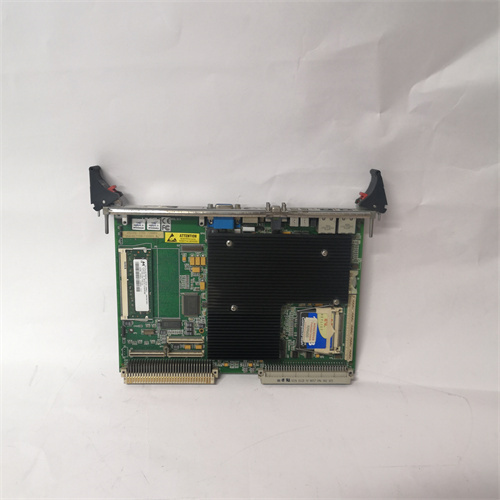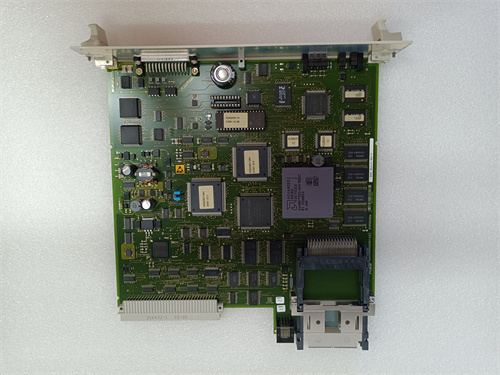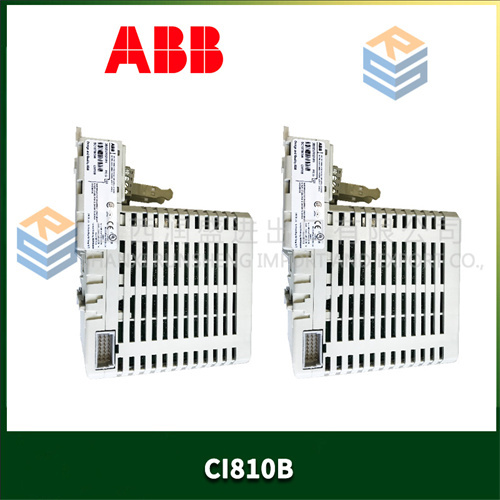Description

1. Parameter Specifications
- Power Supply: The DSQC679 typically operates on a 24V DC power supply. The power consumption is relatively low, around 10 – 15W, ensuring energy – efficient operation in industrial settings.
- Input/Output Configuration:
- Digital Inputs: It is equipped with 32 digital inputs. These inputs can receive signals from various sensors such as proximity sensors, limit switches, and photoelectric sensors. The input voltage range is 24V DC ±10%, which is common in industrial environments.
- Digital Outputs: There are 32 digital outputs. Each output can handle a maximum current of 2A, suitable for driving relays, solenoid valves, and other low – to medium – power devices.
- Communication Interface: It supports fieldbus communication, commonly using the PROFIBUS DP protocol. This allows for seamless integration with other devices in an industrial network, such as programmable logic controllers (PLCs) and human – machine interfaces (HMIs). The communication rate can reach up to 12 Mbps, enabling fast data transfer.
- Electrical Isolation: The module has electrical isolation between the input/output circuits and the communication interface. This isolation helps to protect the device from electrical interference and short – circuits, enhancing its reliability.
2. Applications
- Robotics: In robotic applications, the DSQC679 is often used to interface between the robot controller and external devices. For example, in an automotive assembly line, it can be used to control the grippers of robotic arms. The digital inputs can receive signals from sensors on the grippers to detect the presence of parts, and the digital outputs can control the opening and closing of the grippers.
- Industrial Automation: In general industrial automation systems, it can be used to monitor and control various processes. In a packaging plant, it can control the operation of conveyor belts, filling machines, and labeling machines. The digital inputs can monitor the status of the machines, such as whether they are running or have encountered an error, and the digital outputs can send control signals to start or stop the machines.
- Material Handling: In warehouses and distribution centers, the DSQC679 can be used in material handling systems. It can control the movement of automated guided vehicles (AGVs) and the operation of sorting systems. The digital inputs can detect the position of the AGVs and the presence of packages, while the digital outputs can control the motors and actuators of the AGVs and sorting equipment.
3. Weight and Dimensions
- Weight: The DSQC679 weighs approximately 1.5 kg. Its relatively light weight makes it easy to install and handle during the setup and maintenance processes.
- Dimensions: It has dimensions of around 250 mm in length, 120 mm in width, and 70 mm in height. These compact dimensions allow it to be easily installed in control cabinets or on DIN rails in industrial environments.
4. Features
- High – Density I/O: With 32 digital inputs and 32 digital outputs in a single module, it provides a high – density I/O solution, which is beneficial for applications that require a large number of input/output points in a limited space.
- Flexible Configuration: The module can be easily configured using software tools. Users can set up the input/output functions, communication parameters, and alarm thresholds according to their specific requirements.
- Diagnostic Functions: It has built – in diagnostic functions that can detect faults in the input/output circuits and the communication interface. The diagnostic information can be displayed on the HMI or sent to the PLC for further analysis, facilitating quick troubleshooting.
5. Stability and Reliability
- Robust Design: The DSQC679 is built with a robust housing that can withstand harsh industrial environments, including dust, moisture, and mechanical vibrations.
- Quality Components: It uses high – quality electronic components, which are selected for their reliability and long – term performance. This helps to ensure stable operation over an extended period.
- Redundancy Options: In some applications, redundancy options can be implemented to further enhance the reliability of the system. For example, redundant communication paths can be set up to ensure continuous data transfer in case of a communication failure.
6. Real – World Examples
- Automotive Manufacturing: In a large – scale automotive manufacturing plant, the DSQC679 is used to control the welding robots on the assembly line. The digital inputs receive signals from sensors that detect the position of the car body parts. Based on these signals, the digital outputs control the movement and operation of the welding guns. Thanks to the high – density I/O and reliable performance of the DSQC679, the welding process is highly efficient and accurate, ensuring the quality of the welded joints.
- Pharmaceutical Production: In a pharmaceutical production facility, the DSQC679 is used in the packaging process. It controls the operation of the filling machines, capping machines, and labeling machines. The digital inputs monitor the level of the liquid in the filling tanks and the position of the bottles, while the digital outputs control the flow of the liquid and the movement of the capping and labeling heads. The diagnostic functions of the DSQC679 help to quickly identify and resolve any issues that may arise during the packaging process, ensuring the safety and quality of the pharmaceutical products.















Reviews
There are no reviews yet.